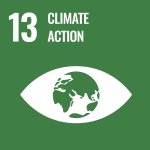Upscaling electrocatalysis to repurpose CO2 as raw material
Did you know that CO2 can form the base of products varying from skin cream to plastic materials and fuel for your car? The chemical industry has long been exploring ways to produce materials from renewable sources, rather than fossil fuels. One possible alternative raw material is CO2.
It is possible to capture CO2 and store it (CCS), but it is also possible to capture CO2 either straight from the air or from industrial sources and put it to immediate use (CCU). Avantium uses this CO2for electrochemical reduction of CO2, an example of electrocatalysis. Electrochemical reduction of CO2 is the conversion of CO2 to chemical products using electrical energy. In other words, reducing CO2 to organic feedstocks such as formic acid (HCOOH), carbon monoxide (CO), ethylene (C2H4), ethanol (C2H5OH) or methane (CH4).
Electrochemical methods are becoming more popular because they can be applied at room temperature, meaning less energy is needed, and reactions are more selective which results in fewer by-products. When combined with renewable energy sources the electrochemical conversion of CO2 could contribute to lowering the amount of CO2 in the atmosphere. Finally, the technology can offer economic advantages over traditional chemical processes, making it commercially interesting.
To ensure this approach is applied at a large scale in the future, Avantium is participating in three European projects to explore the CCU potential: The OCEAN demo, the CELBICON demo and the Terra Tandem.
The OCEAN demo: turning CO2 into formic acid (HCOOH)
In the second quarter of 2021 a pre-pilot unit will start-up in Essen, Germany, which will turn the CO2 from an RWE power plant into formic acid. From one ton of CO2,an equal amount of formic acid can be produced. The formic acid can then be used as a raw material to produce molecules that can be applied in new polyesters or even in skin cream.
The CELBICON demo: turning CO2 into carbon monoxide (CO) and hydrogen
A pre-pilot demonstration plant is running this application in the Amsterdam harbour. The Swiss company Climeworks provided a Direct Air Capture (DAC)-unit which the plant uses to harvest CO2 from the air. CO has a lower economic value than formic acid, yet it has the added value that it forms the base for bulk products. CO and hydrogen – also known as syn-gas – can be used to produce gasoline and kerosine for instance.
The Terra Tandem: Reduction and oxidation
In electrochemical processes, two reactions take place: a reduction and an oxidation. In the OCEAN and CELBICON projects, CO2 is reduced and water is oxidised to oxygen (O2) and hydrogen. In the Terra project Avantium is investigating the possibility to do more valuable oxidations than that of water to produce products other than oxygen. The aim is to produce two streams of chemical products “in tandem” in one electrochemical cell without more electricity consumption.
Associated SDG targets

